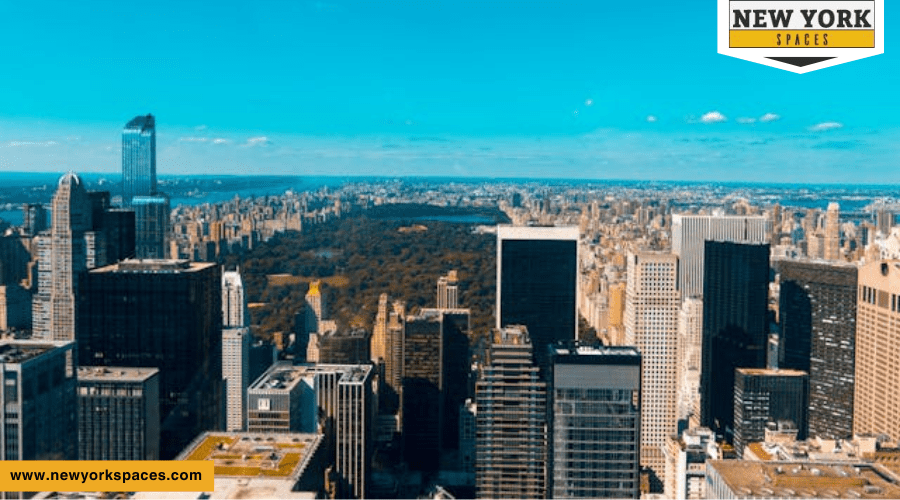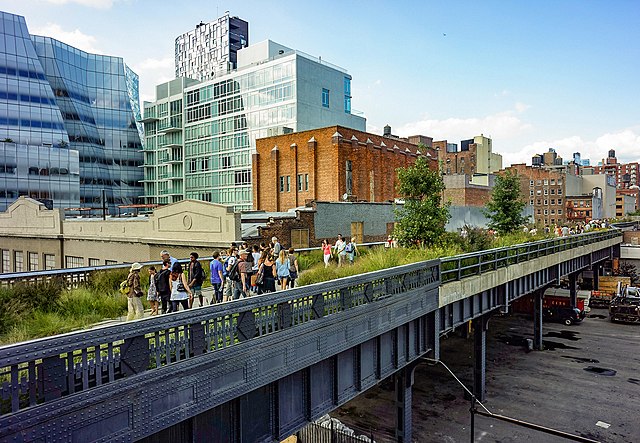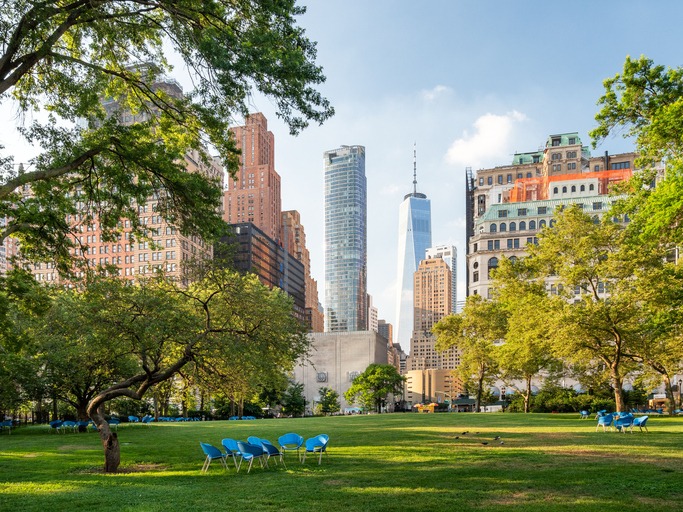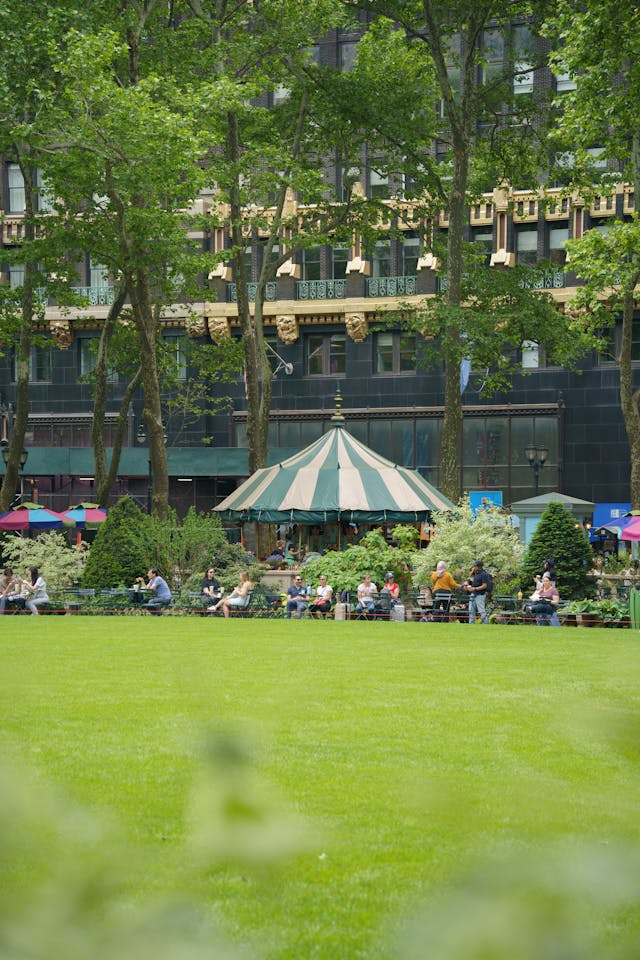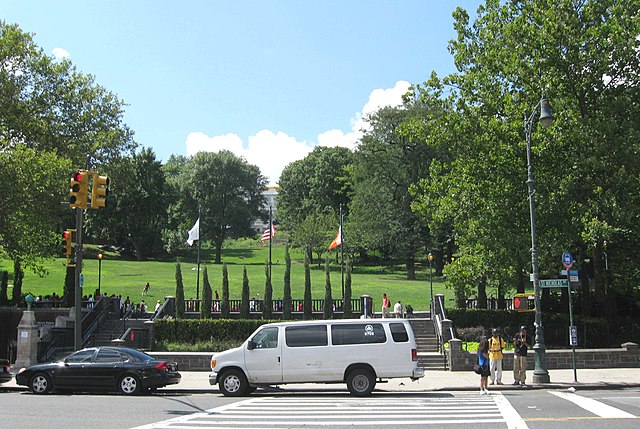New York City, often celebrated for its towering skyscrapers and bustling streets, also boasts some of the most beautiful and diverse green spaces in the world. From the iconic Central Park to hidden gems like the Brooklyn Botanic Garden, these urban oases provide New Yorkers and visitors alike with a much-needed escape from the concrete jungle. Here’s a guide to exploring the green spaces of New York City.
Key Takeaways
- Central Park, in Manhattan, spans 843 acres. It blends nature with history.
- The High Line, elevated above Manhattan, offers a unique park experience.
- Parks less known, like St. Nicholas Park and Fort Tryon Park, provide escapes filled with culture and nature.
- NYC’s green spaces serve as venues for many activities, including outdoor concerts and yoga.
- These spaces use sustainable design to support biodiversity and combat climate change.
Iconic Central Park
Central Park spans 843 acres in the heart of Manhattan. It is full of landmarks and activities. The Bethesda Terrace enchants with its detailed carvings and views. It is ideal for photos or enjoying the park. The Bow Bridge, graceful and romantic, appears in many movies. It is a key spot for visitors.
Belvedere Castle sits on Vista Rock. It offers wide views of the park and the city. It is perfect for sightseeing and watching birds. Central Park is home to over 200 bird species.
Strawberry Fields honors John Lennon. It is a place of peace. The lake offers boating. Hidden trails provide quiet spots. Central Park blends art, culture, and nature. It has something for everyone.
The High Line
Above Manhattan’s busy streets, the High Line offers a view like no other. This 1.45-mile park, once a freight rail line, runs from Gansevoort Street to West 34th Street. Walking its path, you see a mix of city design and nature. It’s a quiet spot in New York City.
The High Line is more than a park. It is art. Flowers, trees, and art fill it. It’s a break from the city noise. Here, nature and city design meet. The landscapes and art change, showing New York City’s spirit.
The High Line shows what communities and smart design can do. It turns New York’s old industrial part into a lively, green place. It makes the city and its people’s lives better.
Prospect Park
Designed by the same landscape architects who created Central Park, Frederick Law Olmsted and Calvert Vaux, Prospect Park is Brooklyn’s flagship park. It features a 60-acre lake, the only forest in Brooklyn, and the Long Meadow, a vast and inviting green space perfect for picnics and sports.
Brooklyn Botanic Garden
Adjacent to Prospect Park, the Brooklyn Botanic Garden is a beautifully manicured 52-acre garden known for its Cherry Esplanade with blooming cherry trees in spring, the Japanese Hill-and-Pond Garden, and the recent addition of a Native Flora Garden. It’s a must-visit for botany enthusiasts and those seeking tranquility.
Flushing Meadows Corona Park
Famous for being the site of two 20th-century World’s Fairs, this park in Queens is now the city’s third-largest. Home to the USTA Billie Jean King National Tennis Center, the New York Hall of Science, the Queens Museum, and the iconic Unisphere, it offers rich recreational and cultural attractions.
Battery Park
Situated at the southern tip of Manhattan, Battery Park is noted for its stunning views of the Statue of Liberty. Along with its waterfront promenade, it serves as a key point for ferries heading towards Ellis Island and Liberty Island, making it a significant historical gateway.
Riverside Park
Stretching four miles along the Hudson River from 72nd to 158th streets, Riverside Park is famed for its scenic waterfront path and is a favorite for cyclists and joggers. The park also includes playgrounds, soccer fields, and a small marina.
Bryant Park
Located in the heart of midtown, behind the New York Public Library, Bryant Park serves as a cultural center, hosting free events year-round, including yoga and movie nights in the summer, and ice skating in the winter. Its lush lawns are perfect for midday picnics and gatherings.
Fort Tryon Park
Home to the Cloisters, a branch of the Metropolitan Museum of Art dedicated to the art and architecture of medieval Europe, Fort Tryon Park offers one of the highest points in Manhattan, providing spectacular views of the Hudson River.
Wave Hill
A treasure in the Bronx, Wave Hill is a serene public garden overlooking the Hudson River and Palisades. It features beautiful gardens, greenhouses, and art exhibitions, providing a peaceful retreat from urban life.
Hidden Gems: Lesser-Known Parks
Central Park is famous, but New York City hides lesser-known parks. These parks offer unique and quiet escapes. If you want to see more, explore these places.
St. Nicholas Park in Harlem offers more than outdoor activities. It hosts the historic Hamilton Grange National Memorial. This park mixes leisure with American history.
Green-Wood Cemetery in Brooklyn is a National Historic Landmark. It has rolling hills and notable graves. It’s peaceful and beautiful. Flushing Meadows Corona Park in Queens is a cultural center. It hosts the Queens Museum, the Unisphere, and the Queens Botanical Garden.
Socrates Sculpture Park in Long Island City, Queens, this outdoor museum and public park offers large-scale sculpture exhibitions and multimedia installations in a waterfront setting.
Engaging Activities in Green Spaces
In the High Line’s quiet beauty, remember: New York City’s green spaces offer much. They are not just for walks. They are where community thrives. Spread a picnic blanket, eat among trees, and make dining special. Unwind in yoga classes in parks. Nature’s calm improves your yoga.
Birdwatchers, rejoice. These urban havens host diverse birds. It’s a rare chance to see wildlife in the city. If you love music, outdoor concerts bring it. Local artists play, and green spaces turn lively.
Nature walks invite exploration. New York’s plants and animals await. These walks boost health and connect us with nature. They lower stress and build community.
Sustainable Design and Future Outlook
New York City commits to sustainable design in its green spaces. It takes an innovative approach to urban planning. The city focuses on eco-friendly solutions. These solutions fight climate change and boost biodiversity. The city invests in green roofs and pocket parks. It turns the concrete jungle into a mosaic of urban green spaces. This move isn’t just for looks. It’s strategic. It integrates urban agriculture and promotes green infrastructure. This ensures a future that’s more sustainable for everyone.
The focus on sustainable design in NYC’s green spaces aims to fight climate change. It supports a rich diversity of life in the city’s heart. You’re part of a community that benefits from these eco-friendly initiatives. Every new green space adds resilience against environmental challenges.
Looking ahead, the future is bright. NYC’s commitment to sustainable design practices signals a move towards creating resilient, environmentally friendly urban areas. You’re at the forefront of this change. You see how innovative urban planning strategies shape a city. This city values its green spaces as much as its skyline. New York City sets a standard. Urban areas can be vibrant and sustainable.
Frequently Asked Questions
How Many Green Spaces Are There in NYC?
Why Is NYC Called the Greenest City on Earth?
NYC earns its title as the greenest city for its trees, rooftop gardens, and vast green works. Its push for more green spaces and eco-actions mark it as a leader in sustainability.
Which NYC Borough Has the Most Green Space?
Brooklyn has parks. Queens has diverse gardens. The Bronx boasts botanical wonders. Manhattan offers rooftop gardens. But Staten Island, with its trails, has the most green space.
Conclusion
You’ve wandered Central Park’s wide spaces, discovered secrets, and walked the High Line’s high paths. These green places offer more than rest. They’re for fun, showing sustainable design. New York City grows, its pledge to more and better green spots hints at a brighter, greener tomorrow. So, explore. Each visit uncovers a secret or a new view of the city’s natural beauty.

